I think this one is finished now - any tweaking will be minor.
 The finished painting above against a white wall, showing the new dark edges, the deep sides of the canvas are also this colour.
The finished painting above against a white wall, showing the new dark edges, the deep sides of the canvas are also this colour.The blue edge is gone. I realised that it was detracting from the painting, not setting it off and went for a cold dark bitter chocolate brown - lots of cerulean mixed into burnt umber. It echoes the drawing in it quite well. The dark colour needed to be narrower so the image has extended a little in each direction.
There is a little black in the form of charcoal but no black paint, simply very dark and varied mixes for the darkest areas.
I like the way that the metallic copper paint worked and the flashes of gold metallic tissue paper that flickers through in places. Sometimes it's fun to use unexpected materials.
You can see close ups of the textures and surface here and here.
The creases and buckling have been dealt with, Touches of metallic copper paint have been added to small patches of warmth and tip a little balance back to the left hand side.
The middle building has been pushed back. The house has gained a lean-to in order to extend the building a little.
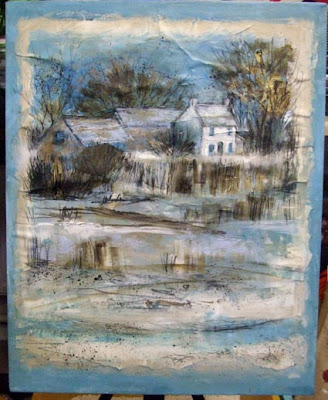 stage 3 above The background has been altered to a mauvey blue to enhance the importance of the turquoise as it flickers through the painting but I'm still not happy with it.
stage 3 above The background has been altered to a mauvey blue to enhance the importance of the turquoise as it flickers through the painting but I'm still not happy with it.There are creases from the buckling to deal with. With some I sliced the paper open and squished glue under and flattened the paper. With others I couldn't so I collaged more paper to cover the creases.
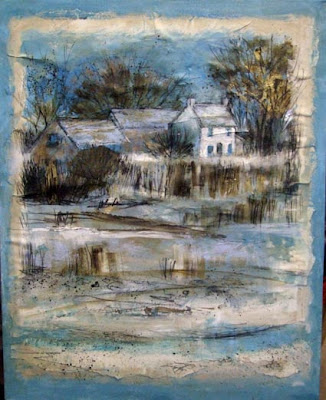 stage 2 above glued to the coloured canvas, with an additional piece of painted collage added at the bottom.
stage 2 above glued to the coloured canvas, with an additional piece of painted collage added at the bottom.I decided to add more foreground and make this a portrait format painting to give more lead in and saltmarsh with wet pools and reeds. The background at this stage is a turquoisey blue.
I decided to lose the right hand buildings.
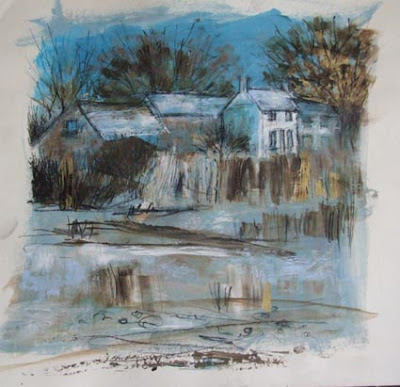 stage 1 above, working on paper with metallic gold foil, ink, charcoal, paint- the first rough marks
stage 1 above, working on paper with metallic gold foil, ink, charcoal, paint- the first rough marksThis was a nightmare to glue down onto the canvas (above) as it buckled and needed lots of sorting out - next time I won't play safe, I'll work straight onto the canvas from the start, collaging elements as I go.
Experimenting like this I have no exact image in mind when I start out - I have a rough idea of the mood and composition but they are subject to change. Once some marks are down the painting starts talking back - elements need to be lost, others pushed and pulled to emphasise, cause to recede, play with lost and found edges or reflections .... whatever evolves.
This is like jazz to photorealism's Bach! extemporise, change, don't follow the notes dictated :>)
Experimenting like this I have no exact image in mind when I start out - I have a rough idea of the mood and composition but they are subject to change. Once some marks are down the painting starts talking back - elements need to be lost, others pushed and pulled to emphasise, cause to recede, play with lost and found edges or reflections .... whatever evolves.
This is like jazz to photorealism's Bach! extemporise, change, don't follow the notes dictated :>)
I'm thinking about putting some lessons together for online teaching at some point soon - what do you think? about experimenting, loosening up .....playing with paint and the visual language of marks.






















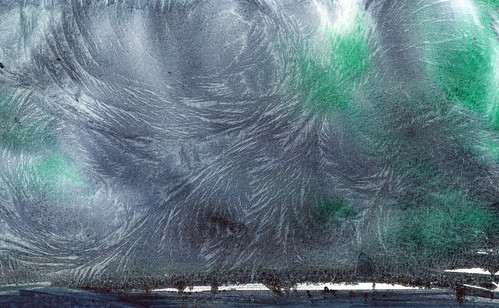
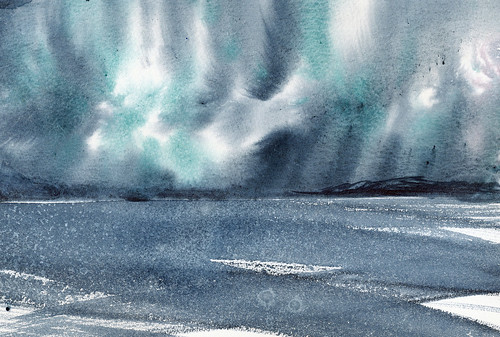
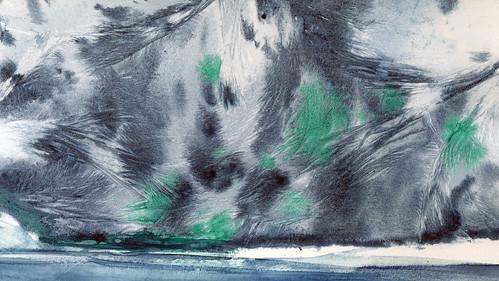
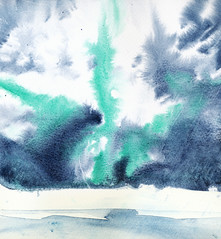
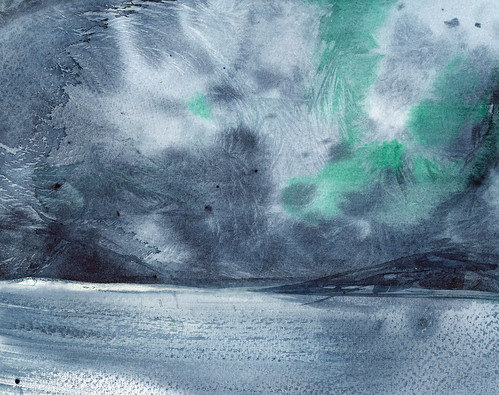
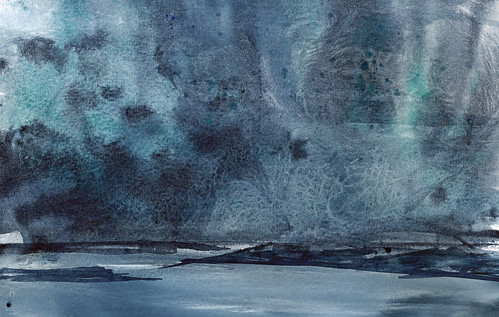



![Reblog this post [with Zemanta]](http://img.zemanta.com/reblog_e.png?x-id=62138613-c7fb-4662-a173-9ba6aa64068d)
